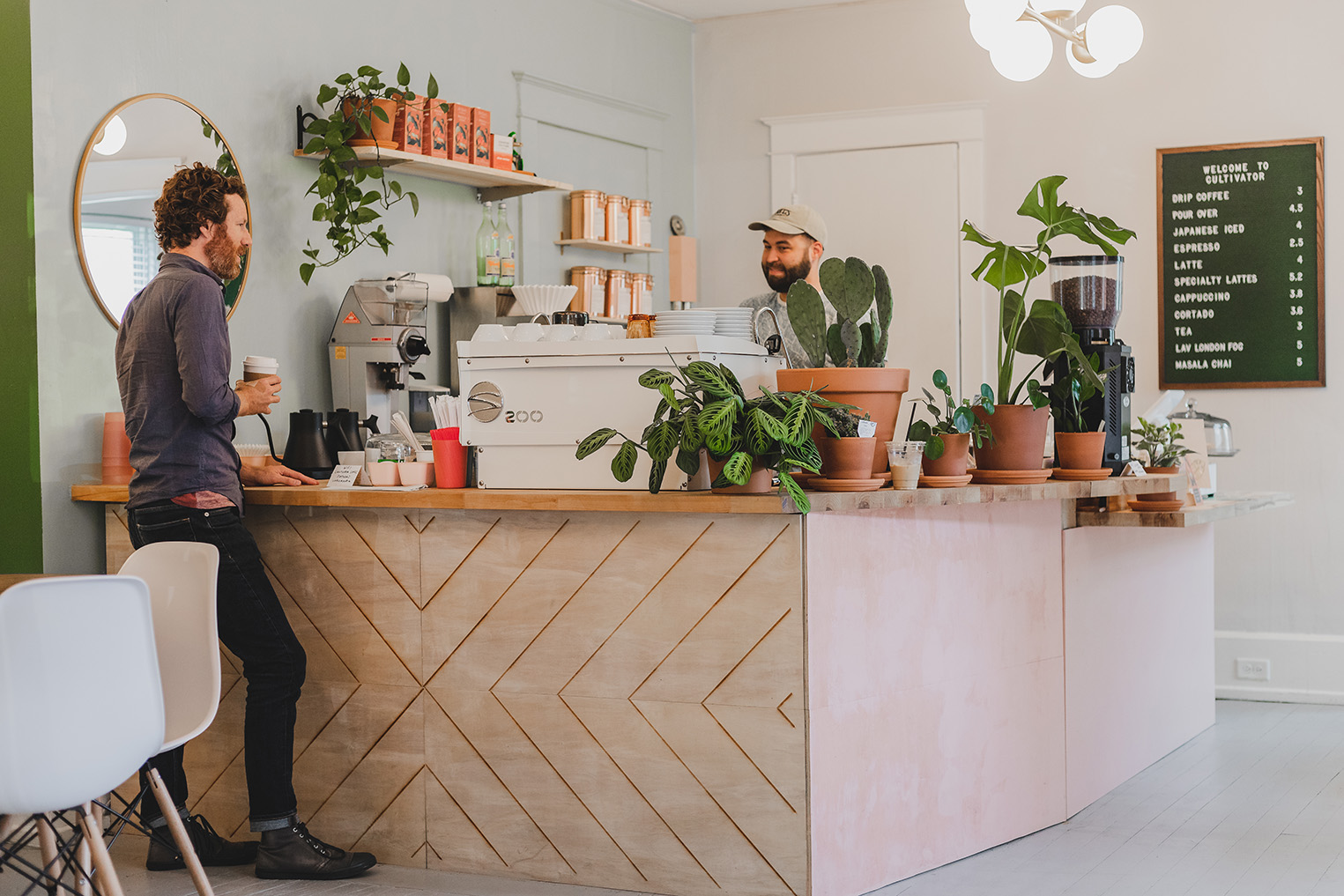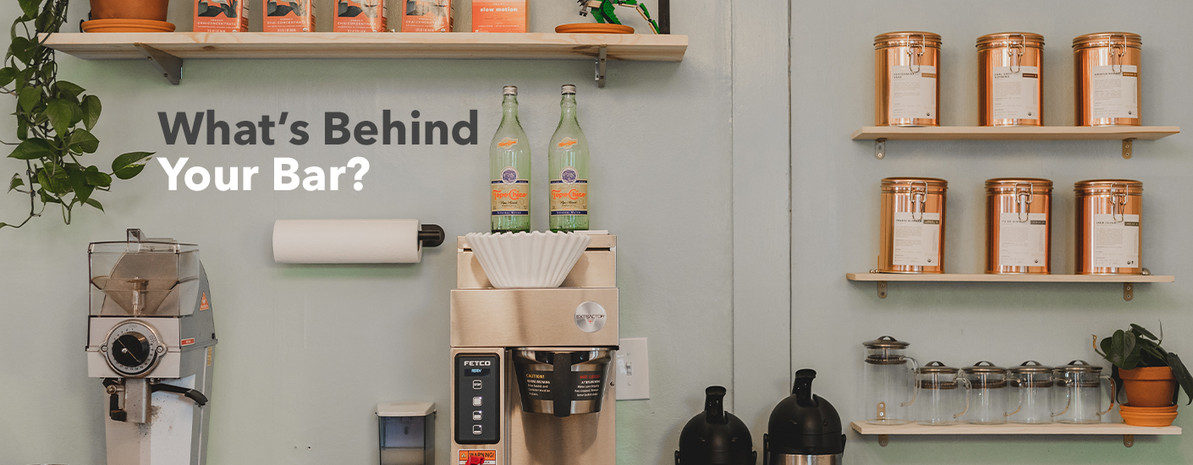What's Behind Your Bar? Thinking Through Coffee Shop Inventory
Coffee, like other things in life, is best served with options. These days especially. When customers order a latte, for example, they probably want to choose the milk, be it alternatives like almond, oat, soy, or even—yes, it still exists!—cow’s milk; and if the latter, they may further want to request a fat level: skim, 2%, whole, half and half (as in a breve). Soon it can get out of control; and that’s just the milk side of the equation.
Customers may also have preferences for the kind or even the brand of sweeteners available alongside the cream on the condiments bar. What’s more, depending on your shop’s style (e.g., second or third wave), customers may have further requests about temperature (extra hot), milk texture (dry), and so on. But where do you draw the line?
The short and somewhat vague but most appropriate answer is that you should draw the line where your business draws the line. A coffee shop with an identity serves what it serves and nothing more.

We have seen successful bare-bones coffee shops in the specialty realm with limited coffee menus: filter, espresso, cappuccino, and latte. One such shop, the short-lived Handsome that was bought by Blue Bottle years ago, had a menu pared down to espresso and steamed milk (though customers could choose their preferred volume of the latter). With the right audience, this works. On the other side, we have seen second wave shops overburdened by options, to the point that the back of house and undercounter and even above counter shelves look like those of a warehouse or grocery store, stocked to the edges with syrups, sauces, sweeteners, milks, etc., and some individual orders run more than one revolution of the receipt roll. Again, there is an audience for this kind of shop, too (although maybe not for its storage philosophy).
The risk with the former is that the menu doesn’t accommodate some customers who, the universe being what it is, will almost certainly visit; the risk with the latter is that the menu accommodates every palate in the universe and, communities being what they are, most of those palates will rarely if ever visit. The shelves will stay stocked, no doubt, until the boxes are filled with expired goods. The former example, regardless of what you think of it, has a strong identity. The latter has an identity, too, but it suffers from a lack of definition that may get in the way of business.
“The menu for such a well-defined shop
writes itself from the business plan”
The question is: which one are you? Once you have an identity, you can begin to plan the shop inventory situation.
Here’s an example. Imagine a coffee shop modeled after any number of Australian breakfast and lunch spots that have been opening in New York and on the West Coast in the past decade. In addition to the expected classic coffee and espresso drinks, this kind of establishment is bound to serve fresh salads and healthy toasts, perhaps even a simple grain dish or two, and is probably going to change the menu seasonally. The focus on local, fresh, and seasonal ingredients, being a core belief of the business and embedded in the business plan, will carry over into the coffee menu, which is likely to feature coffees based on the harvest season. But it doesn’t stop there. The dairy drinks—flat whites and piccolos, for example, which are so much the profit-heart of any cafe’s drink menu—will likely offer very few options: a dairy milk sourced from a local or regional farm and one, at most two, alternative milks with few additives and no gums. Furthermore, the sweeteners will be limited, too, and the syrups will probably be handmade on site or sourced wholesale from companies who also subscribe to a similar health-forward approach.
The menu for such a well-defined shop writes itself from the business plan; and from that it is easy to create a list of inventory, which might look something like this:
- Coffee (seasonal)
- Local dairy (whole milk and half & half)
- One alternative milk
- Homemade chocolate syrup (for mochas)
- Local maple syrup or honey (for special lattes)
- Simple syrup (for sweetener)
A simple list like this invites delegation, too, allowing inventory to be handled quite painlessly by the staff.

This same exercise can be completed for any kind of coffee shop. Imagine a community café, for example, with a focus on being a third place (where its residents can hang out and chat or sit for hours doing homework). Unlike the Aussie-inspired shop, this one may want prices low and options plenty. The list of vendors will be longer but not necessarily any less curated. The dairy options might run the gamut (skim, 2%, whole); the dairy alternatives might, too (almond, soy, oat); and the syrup options might be prominently displayed on bar in a rack next to the espresso machine. The star of this kind of place is not the coffee, which is probably going to be chosen more by cost than other means, but comfort: you can come here and get whatever your heart desires.
Most small operations are probably somewhere in the middle. Still, keeping track of all those products, especially if you are just getting started, can be difficult and might feel overwhelming.
At first you should order in quantities according to your sales projections. After a few months, though, using the data available on the POS or third-party app (like Shopventory), you can create a more accurate ordering schedule. The checklist we have created (download above or below) is not meant to replace the more comprehensive software available, but rather to provide a simple, clear, and thorough worksheet to understand and, even better, to visualize the inventory required by your menu. The first step, though, is always going to be the business plan and corresponding identity. Know who you are and build the menu from there. Know the menu and choose the ingredients from there.
But what about that overzealous customer who comes into that first café and asks for an extra-hot caramel latte? The menu is without a caramel latte and the drink recipes call for a temperature of 140 degrees Fahrenheit, no more, as is customary in many specialty coffee circles so as not to burn away the sweetness inherent in fresh milk from grass-graze cows. You might think this is a problem, but it is not a problem. In fact, it is an opportunity to provide solid customer service, get to know a customer, and talk about the brand.
“The star of this kind of place is
not the coffee, which is probably
going to be chosen more by cost
than other means, but comfort”
There should be nothing scary about kindly telling customers what drinks you serve and how you prepare them, and how your place is not exactly like others, especially not like chains (without, of course, disparaging the chains, who created the industry), and trying, together, to find something on the menu that will accommodate them. Some customers may never seem pleased, but that’s okay, that’s life. Provide a supportive environment for your staff (who has to weather those storms) and the bad apple or two won’t affect morale. Most customers will come around anyway, especially if the coffee, vibes, and people are on point.
Opening a coffee shop is an exercise in choices—from the equipment to the interior design and everything in between. That between is where the menu is and where the ingredients, including coffee and milk, the two headliners, are. It can be easy to get caught up in the bigger decisions, especially if you are overseeing a buildout, applying for permits, managing the money, etc. But it can also be comforting to know—and hopefully this article has provided some comfort—that if the business plan is solid and includes a well-defined identity for the brand, the menu and corresponding inventory needs will follow quite logically and thus easily. Guiltless, then, you can put your energies into those bigger decisions without compromising the day-to-day operations of the forthcoming shop or the brand.
If you'd like further assistance in planning your coffee shop, we'd love to help! Feel free to reach out to our commerical services team, and be sure to join the Prima Coffee Community Industry Pro Space for additional resources and join the conversation with other industry professionals.



